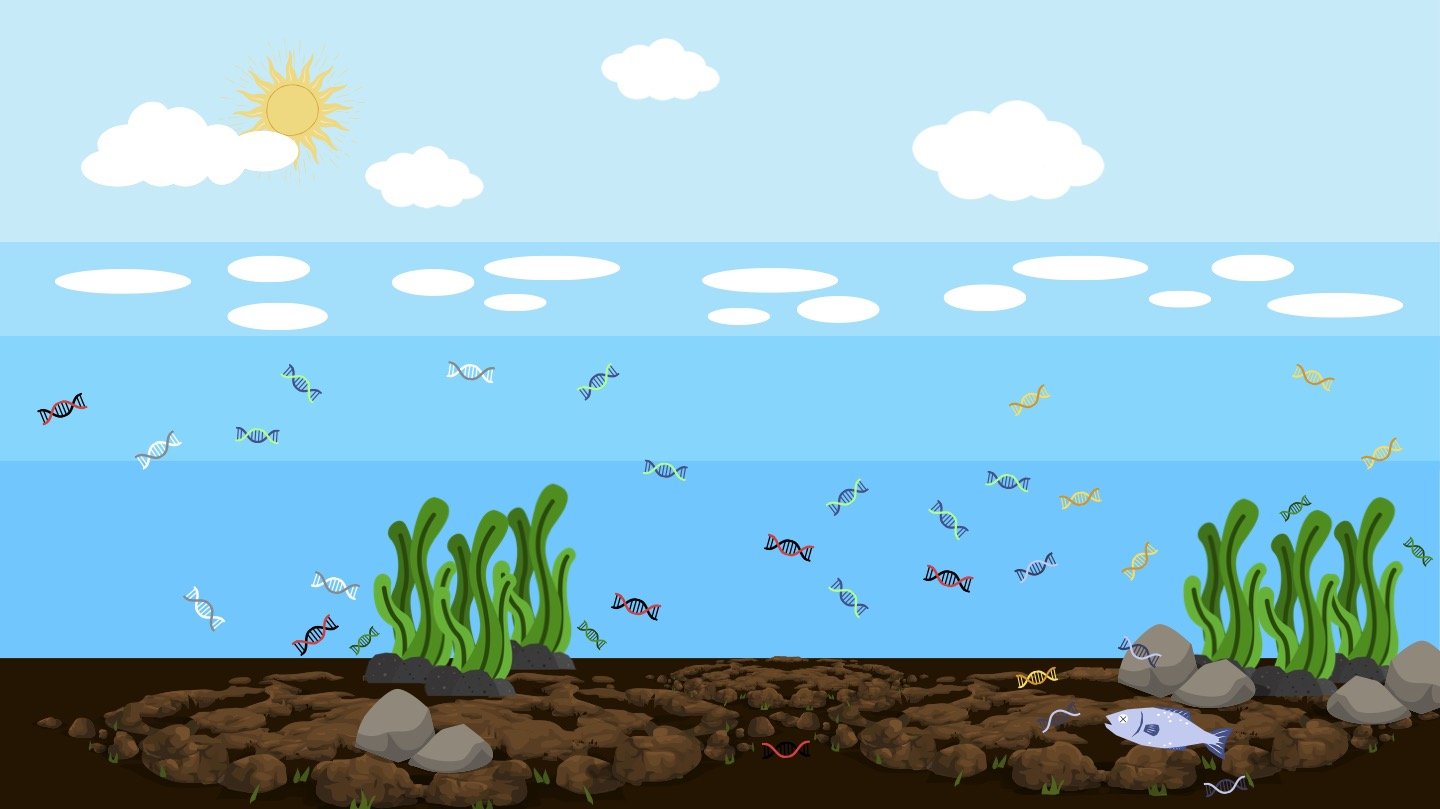Environmental DNA - or more commonly shortened to eDNA - refers to the fact that as an animal goes throughout its daily life, it sheds DNA away from itself. This can be in the form of skin flaking off or mucus and saliva production. This DNA then accumulates in the surrounding environment. eDNA can be collected from both aquatic and terrestrial environments. Within aquatic environments, eDNA persists not only in the water column but can also sink to the bottom where it accumulates in the sediment. The amount of time the eDNA is detectable in the environment depends on various factors, including temperature as well as oxygen and UV levels.
There are two main types of eDNA sampling. The first is a targeted approach, where only the DNA of one species is looked for within the environmental sample. This eDNA approach has been used to detect rare, elusive, endangered, and invasive species. The second approach is called metabarcoding and the goal of this type of eDNA sampling is to identify all the different species which contributed DNA to the sample. This approach can be used to examine the community composition of a habitat.
In aquatic environments, both eDNA sampling types follow a similar workflow. Firstly the water sample needs to be collected. The eDNA then needs to be isolated from the water and this is typically done through filtration, although other methods exist, such as precipitation. The eDNA is then extracted off the filter and is ready for downstream analysis. Targeted eDNA studies tend to analyze the eDNA through quantitative PCR. Not only is this method informative regarding species presence/absence, but it is also able to determine the concentration of the eDNA in the sample. Metabarcoding, however, uses a different technique - DNA sequencing. Through DNA sequencing, all returned DNA sequences within the sample are compared to a database of known DNA sequences. This comparison allows us to determine which species contributed DNA to our environmental sample.
Environmental DNA explained
Written by S. Beal, August 2022
Image credit: S. Beal







